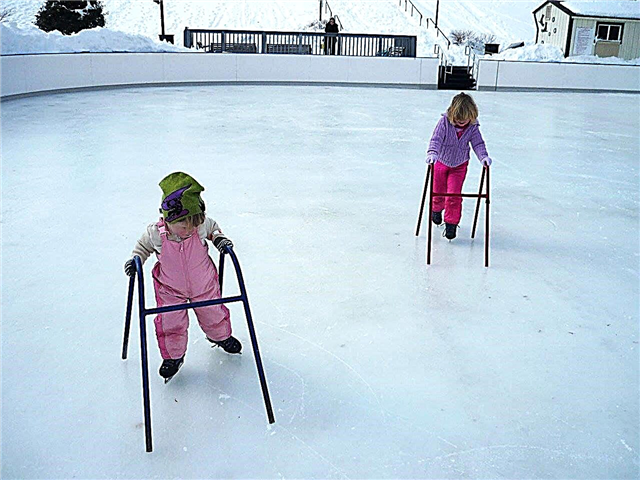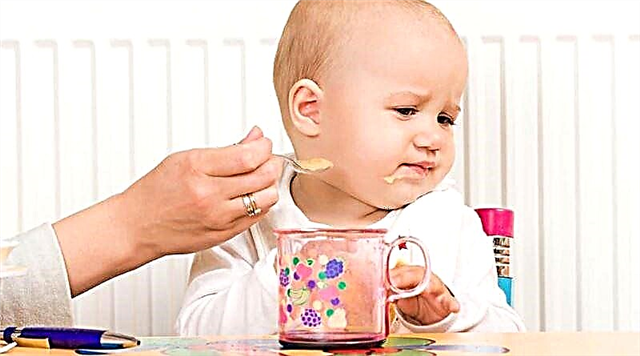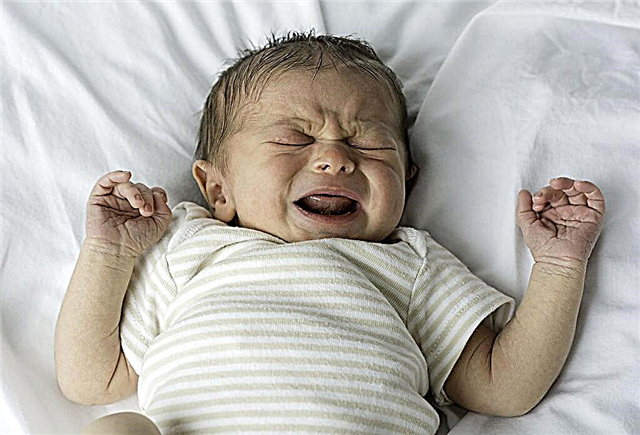
In the fight against viral infections in children, modern antiviral medicines are used, which include the drug called Arbidol, produced by the Russian company Pharmstandard-Leksredstva. How does this medicine work on a child's body and how to give it to a child correctly?
Release form
Arbidol is produced in three forms:
- Powder, to which water is added and a suspension for oral administration is obtained. This form is most convenient for children as it is easy to swallow and dispense using the measuring spoon supplied with the bottle. The powder is characterized by a white color and a fruity odor. In the amount of 37 grams, it is placed in a dark glass bottle with a volume of 125 ml. There is a mark on the bottle at the 100 ml level, which helps to properly dilute the powder with water. The finished suspension has a fruity aroma and white-cream or white-yellow color.
- Film-coated tablets. It is round, convex on both sides, white or white-cream in color, and if you break the tablet, you will see the white contents, which can have a cream or greenish-yellow tint. Tablets are sealed in blisters or polymer jars from 10 to 40 pieces in one package.
- Capsules. They are less often prescribed for children, since such hard gelatin capsules are larger than the tablet form. The color of the capsules differs depending on the dosage: yellow capsules contain 50 mg of the active ingredient, and white ones with a yellow cap - 100 mg. Inside there is a granular and powdery substance of white color with a yellow-green or cream shade. One package contains 5 to 40 capsules.
Separately, we note the drug Arbidol Maximum. Under this name, the manufacturer offers capsules with an increased dosage of the active compound. They have a white cap, and the contents are the same as those of Arbidol capsules. One pack of this medication contains 10 or 20 capsules.

Composition
The main component of any form of Arbidol, due to which the drug has the property of influencing viruses, is represented by umifenovir in the form of monohydrate hydrochloride. The finished suspension contains 25 mg of such a compound per 5 milliliters of drug, and tablets, like capsules, contain either 50 mg or 100 mg of this substance in each. Arbidol Maximum contains umifenovir in an amount of 200 mg per 1 capsule.
The powder additionally contains sucrose, maltodextrin, sucralose (these substances give the suspension a sweet taste), starch, silicon dioxide, benzoate and sodium chloride. Cherry and banana flavors are available in this form for a pleasant scent.

Additional substances of the tablets are povidone K30, potato starch, MCC, croscarmellose sodium and calcium stearate, and the shell is made of hypromellose, macrogol 4000, polysorbate 80 and titanium dioxide. The inner contents of the capsules are similar to the composition of the tablets, but the croscarmellose in powder is replaced by colloidal silicon dioxide. Titanium dioxide and gelatin are used for the capsule shell, and dyes are added for the color.
Operating principle
The umifenovir contained in Arbidol has an antiviral effect, which consists in preventing the adhesion of viruses to mucosal cells. It is this effect that helps to quickly get rid of such symptoms of malaise as sore throat, runny nose or cough, and also helps to quickly eliminate general weakness, fever with chills, headache and other signs of intoxication.
And in this issue, Dr. Komarovsky will tell us all about viral infections, how infection occurs and how to deal with microbes.
Since viruses cannot contact the cells of the human body, they soon die. This effect also determines the preventive effect of the drug. Once on the mucous membrane, the virus cannot gain a foothold in the respiratory tract and is in the body for a limited amount of time without causing illness. If the drug is taken at the initial stage of ARVI, it helps to ease the course of the disease and prevent complications.
The medicine is effective for infection with influenza viruses, rhinoviruses, coronaviruses, RS viruses, adenoviruses and parainfluenza pathogens. In addition to the antiviral effect, Arbidol also has the following effects:
- Immunostimulating. It is associated with the activating effect of the drug on macrophages, which improves the processes of phagocytosis, as well as on lymphocytes, as a result of which the number of natural killer cells and T-helpers increases. In addition, umifenovir stimulates the synthesis of interferon, due to which the immune defense response to the virus will be stronger.
- Detoxification. This effect is manifested by a decrease in signs of intoxication, since the drug does not allow viral particles to damage healthy cells in the mucous membrane. As a result, the inflammatory process is not supported, and the level of breakdown products in the blood from already damaged cells gradually decreases.

Clinically, the effect of umifenovir on the child's body leads to:
- Reducing the risk of contracting SARS or influenza during the epidemic season.
- An easier course of a viral infection of the respiratory tract.
- Reducing the risk of complications of infections.
- Reducing the frequency of exacerbations of such chronic pathologies as herpes or bronchitis.
- Reducing the risk of infectious viral complications in the postoperative period.
- Accelerate recovery from rotavirus.
Indications
Arbidol is prescribed for children:
- For viral infections of the upper respiratory tract, including parainfluenza and influenza. The remedy is recommended to be given at the first symptoms, for example, at a temperature of 38 degrees, since an earlier start of the intake allows you to achieve a more pronounced effect.
- With rotavirus enteritis, as a complex therapy drug.
- With coronavirus-induced SARS syndrome (also called SARS).
- For the prevention of infection with viruses against which umifenovir is active.
- For the treatment of chronic herpes, chronic bronchitis or pneumonia. With such pathologies, the drug is prescribed in addition to the main therapy.
- To prevent infectious complications in patients who underwent surgery.
- With secondary immunodeficiencies.

From what age is it allowed to take?
Children under 2 years old should not be given any form of the drug, since Arbidol in liquid form is allowed only for the treatment of babies who are 2 years old, and solid forms of the drug are prescribed only from 3 years old... The annotation notes that the suspension is used in two-year-old children and older with influenza, SARS or rotavirus. If such a medication is prescribed for SARS, then the limitation for treatment will be the age of 12 years, and for prophylactic use - the age of 6 years.
Tablets or capsules are given to a three-year-old child and older, if the baby is able to swallow them without much difficulty. If it is difficult for a child to swallow such a solid medicine, the doctor prescribes a suspension. Since the dosage in the drug Arbidol Maximum is increased, such capsules can be given to children only from 12 years old.


Contraindications
The use of any variant of Arbidol is not recommended when umifenovir intolerance is detected. You can not give drugs and with increased sensitivity to their other components.
Due to the presence of sucrose and maltodextrin in the suspension, this form is not used for malabsorption (glucose-galactose), isomaltase deficiency or sucrose deficiency. It also needs to be carefully prescribed for diabetes. The drug is not prescribed for adults during pregnancy or breastfeeding.
Side effects
Some children develop allergies when taking Arbidol. Such an adverse reaction is extremely rare anaphylaxis and is often in the form of itching or urticaria. It is also possible the appearance of a skin rash or Quincke's edema.

Instructions for use
The suspension, capsules or tablets must be taken before meals. To prepare a liquid medicine, a little pre-boiled and cooled water (about 30 ml) is poured into a bottle with a powder. After shaking, more water is added to the inside of the vial so that the total volume of the drug is 100 ml (check the label). Shaking the drug is required before each dose, since the suspension stratifies during storage.

Dosage
2-3 years
For children of this age, the medicine is given exclusively in the form of a suspension. Since a single dose is 50 mg of umifenovir, the child should be given 10 ml of the drug at a time.

3-6 years old
At this age, it is permissible to give Arbidol both in liquid and solid form. The dosage of the medication per dose for children under six years of age is 50 mg of the active ingredient, which corresponds to:
- 10 ml suspension
- 1 tablet containing 50 mg active compound
- 1 capsule containing 50 mg of umifenovir

6-12 years old
A single dose for this age group is 100 mg of umifenovir. Their child can get from:
- 20 ml suspension
- 1 tablet with 100 mg of active ingredient or 2 tablets of 50 mg of umifenovir
- 1 capsule with 100 mg of umifenovir or 2 capsules of 50 mg of active ingredient

Over 12 years old
At this age, 200 mg of umifenovir is given per dose, which corresponds to:
- 8 scoops of suspension (40 ml)
- 4 tablets or capsules of 50 mg of active ingredient
- 2 tablets or capsules of 100 mg of active compound
- 1 capsule Arbidol Maximum
As you can see, children who are 12 years old are more preferable to capsules with a higher dosage of the active ingredient.

Reception scheme
Taking into account the disease and the purpose of use, Arbidol is prescribed as follows:
- To prevent infection with SARS or influenza in the midst of an epidemic - twice a day for three weeks.
- To protect a child who has been in contact with a patient with acute respiratory viral infections or influenza - once a day for 10-14 days.
- With uncomplicated ARVI or uncomplicated flu - within 5 days four times a day (with an interval of 6 hours).
- With flu or ARVI, if complications such as pneumonia or bronchitis appear - first four times, and after five days of treatment, they switch to taking it once a week for 4 weeks.
- With rotavirus infection - four times a day for a course of 5 days.
- To prevent the development of SARS - once a day for 12-14 days.
- For the treatment of SARS in children over 12 years old - for 8-10 days, 2 doses per day.
- To prevent viral complications after surgical treatment - once a day for two days before the operation, and then on the second and fifth days after the intervention.
- In chronic bronchitis or herpes (for example, with herpes sore throat) - the drug is prescribed for a course of 5-7 days four times, and then given for 4 weeks only twice a week.
If you skip the next dose, you need to drink the drug as soon as it is discovered, and then take the medication in the usual way.

Overdose and interactions with other medications
Annotation to the medicine indicates that there have been no cases of overdose or incompatibility of Arbidol with other medicines when using this medicine.
Terms of sale
All Arbidol products are over-the-counter medicines and are freely available in pharmacies. On average, one bottle of powder costs about 300 rubles, and the price of one pack of 10 tablets of 50 mg of the active ingredient is 150 rubles.

Storage and shelf life
Capsules, tablets and powder not diluted with water should be made at home at temperatures up to + 250C in a place where a small child will lack the drug. The shelf life of unopened powder, Arbidol Maximum capsules and coated tablets is 2 years, and Arbidol capsules - 3 years. After preparing the suspension, the medication should be stored in the refrigerator for no longer than 10 days. In this case, it is unacceptable to freeze the drug.
We suggest watching the next no less interesting issue of Dr. Komarovsky about antiviral drugs for children.
Reviews
Many mothers respond well to the use of Arbidol in children, noting that taking such a medicine in the first days of the illness helped to quickly get rid of ARVI and recover from the flu... Parents who gave the medication for prophylactic purposes also confirm that the children began to get less colds and ARVI during the season of such diseases, and if they got infected, then the disease was easier.
For the treatment of children, mothers often prefer a suspension, since it is easy to dose it, and the pleasant taste does not cause complaints for most babies. However, many parents complain about its short shelf life, as well as its high cost. There are also reviews that mention the ineffectiveness of the drug.
The opinions of doctors regarding Arbidol are also different. Some pediatricians advise it during the cold season and is often used in children with the flu or rotavirus. Others prefer to fight ARVI with symptomatic remedies, for example, Dr. Komarovsky places greater emphasis on drinking plenty of fluids, humidifying the air and frequent ventilation.

Analogs
To replace Arbidol with another medication, it is best to consult a doctor, because each of the antiviral agents has its own limitations in use. Instead of Arbidol, the pediatrician may recommend Orvirem syrup, Amiksin tablets, Amizonchik syrup, Kagocel tablets and other medicines. If a small patient has severe chickenpox or herpetic sore throat, it is preferable to use acyclovir preparations.
To support the immune system, children with ARVI are also often prescribed drugs based on interferon. One of the most popular drugs in this group is Viferon, available in gel, rectal suppositories and ointments. An immunostimulating effect is also noted in Cytovir-3 syrup, prescribed for children aged 1 year and older.

In addition, many mothers with frequent illnesses in their children decide to give their son or daughter homeopathy, for example, Ergoferon, Aflubin or Anaferon. However, most doctors consider such funds to be ineffective and do not consider them an adequate replacement for Arbidol.



